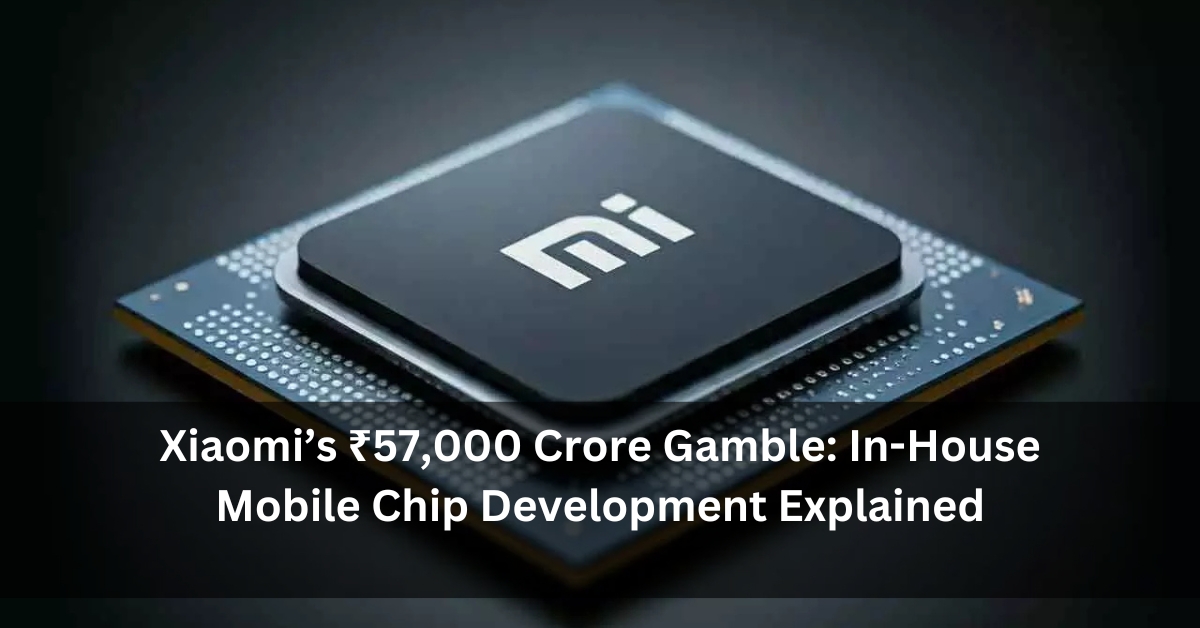Xiaomi’s ₹57,000 Crore Gamble: In-House Mobile Chip Development Explained
Xiaomi, one of the most popular smartphone brands in India, has made headlines with a bold move — the company is investing $7 billion (approximately ₹57,000 crore) over the next ten years to build its own mobile chips. This decision marks a big shift in how Xiaomi plans to create its devices, and it could change the way smartphones work in the coming years.
At FutureAI, we break down what this means for Xiaomi, why they are doing it, and how it may impact the Indian smartphone market.
What Is Xiaomi Planning?
Xiaomi has announced that it will be investing heavily in developing its own chipsets. This includes a focus on high-performance chips that can power future Xiaomi smartphones and tablets. The company is starting this journey with its new Xring O1 chip, which is expected to feature in the upcoming Xiaomi 15S Pro smartphone and Xiaomi Pad 7 Ultra tablet.
The Xring O1 chip is being developed using 3-nanometre (3nm) technology — currently one of the most advanced chip making processes in the world. Smaller nanometres mean more powerful and energy-efficient chips, which can lead to faster phones with better battery life.
Why Is Xiaomi Making Its Own Chips?
Xiaomi has been dependent on global chipmakers like Qualcomm and MediaTek for many years. While these partnerships have served Xiaomi well, the company now wants to build chips that are made specifically for its own devices. This allows Xiaomi to control the complete hardware and software experience, similar to how Apple builds its iPhones with its own A-series chips.
There are also practical reasons behind this move. Global chip shortages, trade restrictions, and increasing production costs have shown tech companies the risks of depending too much on foreign suppliers. Xiaomi’s investment is a step towards being more self-reliant and better prepared for future disruptions.
At FutureAI, we’ve been tracking this shift towards in-house technology across the industry, and Xiaomi’s step is one of the biggest so far in the Android space.
What Is the Xring O1 Chip?
The Xring O1 chip is Xiaomi’s first major attempt at building a mobile processor from scratch. Reports suggest that this chip will offer improved AI capabilities, better energy management, and seamless integration with Xiaomi’s MIUI software.
Early performance tests (known as benchmarks) show that the Xring O1 may even outperform some current Snapdragon flagship chips in certain tasks. While these are still early results, it shows that Xiaomi is taking this development very seriously.
If Xiaomi is able to offer similar or better performance compared to current market leaders while keeping prices in check, it could have a big advantage, especially in price-sensitive markets like India.
What Does This Mean for Indian Users?
India is Xiaomi’s largest market outside China. Any change in Xiaomi’s product strategy will affect millions of users here.
With this new chip strategy, Xiaomi phones could become faster, more efficient, and even better at handling tasks like photography, gaming, and battery optimization. Since Xiaomi controls both the software (MIUI) and now the hardware (Xring chips), it can create a smoother and more reliable user experience.
This may also help Xiaomi bring down prices in the long run, as the company will not have to pay third-party chipmakers. If passed on to consumers, it could mean better value for money.
At FutureAI, we’ll continue to keep an eye on how these changes reflect in the performance of upcoming Xiaomi devices launched in India.
What’s Next?
Xiaomi is not new to experimenting with in-house chips. In the past, the company tried to build processors like the Surge S1, but those efforts were limited. However, this $7 billion investment shows that Xiaomi is now committed for the long term.
The first devices featuring the new chip — the Xiaomi 15S Pro and Xiaomi Pad 7 Ultra — are expected to launch in mid-2025. These launches will be closely watched not only by fans but also by competitors.
This could also inspire other brands like Realme, Vivo, and Oppo to invest more in their own chips making efforts, which may eventually result in better technology choices for consumers.
FutureAI believes that such developments are a positive sign for the tech industry. As companies compete not just on features but also on core technologies, consumers will benefit the most.
Final Thoughts
Xiaomi’s decision to invest ₹57,000 crore in building its own mobile chips is a bold but thoughtful move. It reflects the company’s confidence and vision for the future. For Indian users, this could mean better phones, faster performance, and more reliable products in the coming years.
Whether this bet will pay off remains to be seen. But what’s clear is that Xiaomi is no longer content with just assembling phones — it wants to own the entire technology stack.
Keep visiting FutureAI for the latest updates on mobile technology, gadget reviews, and in-depth analysis of trends that shape the tech world.
FutureAI is your trusted guide to the future of smartphones and beyond.







